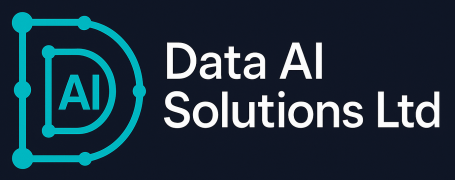
Why Universities Must Embrace AI, Not Penalise It
The rapid ascent of Artificial Intelligence has sent ripples through every sector, and academia is no exception. For universities, the initial response to tools like ChatGPT often veered towards apprehension, with some institutions implementing strict bans and dire warnings about academic dishonesty. While the concerns about plagiarism and the integrity of learning are valid, this punitive approach overlooks a crucial, undeniable truth: AI is not a passing fad; it is a fundamental shift in how we work, learn, and create. Therefore, instead of penalizing its use, universities must pivot to teaching and encouraging its correct application as a powerful support tool.
The knee-jerk reaction to forbid AI is understandable. The sudden ability for machines to generate coherent text, code, and even images challenged traditional notions of original thought and effort. However, clinging to a pre-AI pedagogical model is akin to banning calculators in a calculus class or word processors in an English composition course. It ignores the reality of the professional world students will enter. In countless industries, from marketing and software development to research and design, AI is already an indispensable aid, automating mundane tasks, fostering creativity, and accelerating discovery.
To equip students for this future, universities have a responsibility to transform from gatekeepers to guides. This means fostering an environment where AI is viewed not as a cheat sheet, but as a sophisticated support tool, much like a library, a statistical software package, or a research assistant.
Here's why and how universities can embrace AI effectively:
1. AI is Here to Stay: Adapt or Be Left Behind. The notion that AI is a temporary phenomenon is simply incorrect. Generative AI models are evolving at an astonishing pace, becoming more sophisticated and integrated into our digital lives. Universities that resist this tide risk graduating students ill-equipped for a workforce that increasingly leverages AI. By embracing it, institutions can lead the charge in defining ethical AI use and preparing a generation of responsible innovators.
2. Redefining Academic Integrity: Transparency, Not Ostracization. The definition of academic integrity needs an urgent update. Instead of blanket prohibitions, universities should focus on transparency and attribution. Students should be explicitly taught how and when to use AI tools responsibly, and be required to disclose their usage in assignments. This could involve simple footnotes, dedicated sections in reports, or even submitting chat logs to demonstrate their interaction with the AI. The focus shifts from "Did you use AI?" to "How did you use AI, and what was your intellectual contribution?"
3. Cultivating Higher-Order Thinking and Critical Evaluation. When mundane tasks like basic summarization or initial draft generation can be offloaded to AI, it frees up valuable time for students to engage in higher-order thinking. Educators can design assignments that demand:
- Critical analysis: Evaluating AI-generated content for accuracy, bias, and nuance.
- Synthesizing diverse information: Combining AI insights with human knowledge and other sources.
- Complex problem-solving: Using AI as a brainstorming partner to tackle intricate challenges.
- Ethical reasoning: Debating the societal implications and biases inherent in AI systems.
- Effective Prompt Engineering: Learning to communicate clearly and precisely with AI to get desired results – a skill in itself.
4. Empowering Students as Creators and Innovators. AI can be a powerful amplifier for creativity. From brainstorming ideas and generating code snippets to creating initial visual mock-ups, AI can act as a tireless assistant, allowing students to explore more possibilities and iterate faster. Universities should encourage experimentation, demonstrating how AI can streamline workflows and enable students to achieve more ambitious creative outcomes.
5. Preparing for an AI-Integrated Workforce. The workforce of tomorrow will undoubtedly be AI-augmented. Graduates who understand AI's capabilities, limitations, and ethical considerations will have a significant advantage. Universities can provide practical training in:
- AI Tool Proficiency: Familiarity with various AI platforms and their specific applications.
- Data Literacy: Understanding how data fuels AI and the importance of data quality and privacy.
- Ethical AI Development and Deployment: Ensuring AI is used responsibly and equitably.
Practical Steps for Universities:
- Develop Clear AI Usage Policies: These should be dynamic, course-specific, and focus on disclosure and ethical guidelines rather than outright bans.
- Educate Faculty: Provide comprehensive training for educators on AI tools, prompt engineering, and how to redesign assignments for an AI-integrated learning environment.
- Integrate AI Literacy Across Curricula: Introduce modules or discussions on AI's impact and ethical considerations in every discipline.
- Provide Access and Resources: Ensure all students have equitable access to AI tools and support in learning how to use them effectively.
- Foster Open Dialogue: Create forums for students, faculty, and administrators to discuss the evolving landscape of AI in education.
The choice is clear: universities can either remain resistant, fostering an environment of fear and missed opportunity, or they can embrace AI as a revolutionary support tool. By guiding students to use AI correctly, ethically, and strategically, institutions will not only safeguard academic integrity in a new era but also empower the next generation with the essential skills to thrive in an increasingly AI-driven world.
